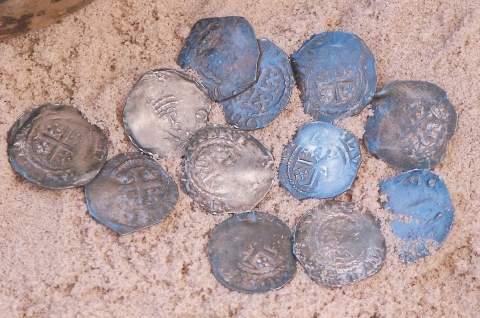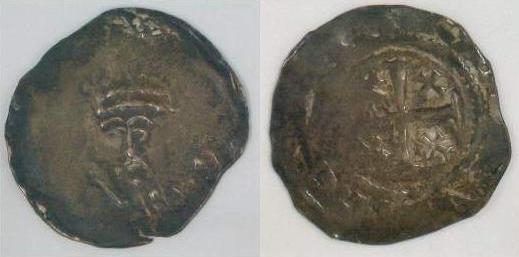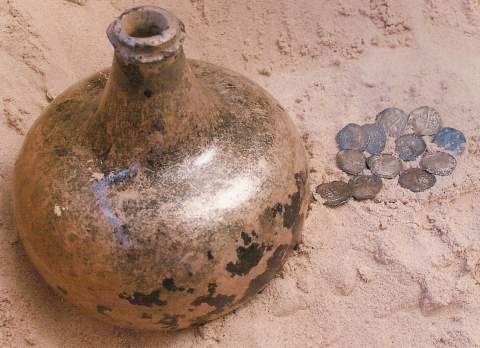
The Thorpe Thewles Coin Hoard

The surviving 12 remnants of the Thorpe Thewles Hoard.
This
above collection of silver Henry II cross-and-crosslets pennies (1158-1180) were
purchased by the Dorman Museum in 1932 from an initial hoard of 98 coins found
by a workman 3 feet deep in a sandpit at Thorpe Thewles. The then curator of the
museum had a limited purchase budget so only 18 coins could be purchased for
their collection.

A close-up of the obverse & reverse of one of the hoard coins.
These
coins are significant as they represent the first English "sole
currency". That is the first use of a single type of English money, marking
the end of the period when coinage was changed at frequent intervals and was of
a no-uniform design. These first uniform currency is notorious for its ugly
appearance, its bad craftsmanship and its careless execution.
Also
discovered in the same archaeological context as the coins (although not
necessarily associated with them) was an intact glass bottle (see below). Initially this
was thought to be from the same period but was later identified as an early
eighteenth century sack bottle made from dark green glass, with a worn
gold-coloured layer caused by deterioration on the surface.

Eighteenth century sack bottle found in the same context as the hoard.
Only recently has the known remnants of the Thorpe Thewles hoard been subject to expert numismatic scrutiny (T.C.R. Carter, British Numismatic Journal 75, 2005, pages 169 to 172). Assuming that the surviving 12 coins in the Dorman museum are representative of the original hoard the presence of a single Class "E" type cross-and-crosslet penny, from the Tower of London Mint, is conspicuous and allows a tentative date no earlier than 1170 to be proposed for the hoard. This date is similar to other hoards recorded form the south of England. These have been attributed to a spate of hoarding activity associated with the rebellion against Henry II by his sons in 1173/4. An alternative reason for the concealment of the Thorpe Thewles hoard could be due to more of a locallised reason. In 1173 King William the Lion of Scotland invaded the North-East to support the rebellion against King Henry II and to extend the territory under his control. This would no doubt have caused great panic in the region and it is easy to imagine that this was the reason for the hoard's burial by one of the more affluent locals living in or near to Thorpe Thewles.
![]()